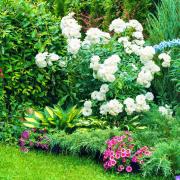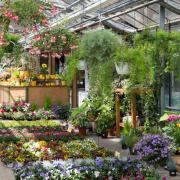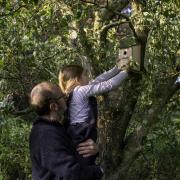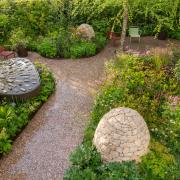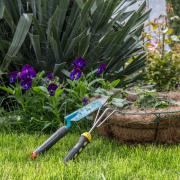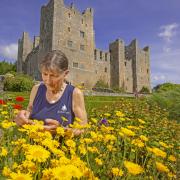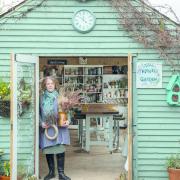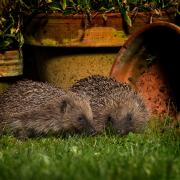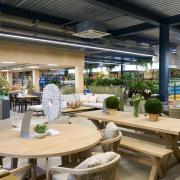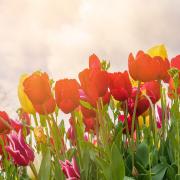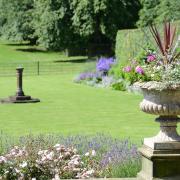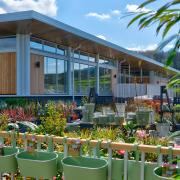Why not celebrate the longest day of the year with hanging baskets and a salad harvest, says Suzie Hanson, head gardener at Brodsworth Hall

The extra light and warmth that usually accompanies the longest day of the year – June 21st – encourages the garden to put on an exuberant burst of growth. Unfortunately, it also means extra weeds.
It’s important to keep on top of them at this time and you can do this by hoeing regularly during dry conditions. Giving the soil a regular mix, even if you can’t see a weed, will prevent seedlings taking hold, making the whole job so much quicker, easier and, dare I say, enjoyable.
Here at Brodsworth, we are well into the grass cutting season. Even with our range of machinery to choose from it can still take the team two days to get it all cut and edged.
Depending on how big your lawn is, you may end up with a heap of grass cuttings that can pose a challenge for a regular-sized garden compost heap. If grass is not mixed with other green waste it forms a horrible, stinky lump that takes a long time to compost. To avoid this, make sure you keep the heap well turned to mix the grass. You could also incorporate woody waste to create air gaps and then just keep turning with your regular garden fork and spade.
This month herbaceous borders reach their early summer peak, with many beginning to flower in May right through until November. These are tended to by our brilliant volunteers at Brodsworth, who ensure that there are always perennials in flower.
A great way of adding more colour to your garden is by using hanging baskets. If you are creating your own display, you will have planted your baskets with plugs or seedlings back in April and after spending a couple of months in the shelter of a glasshouse they should be looking lovely and ready for displaying.
The risk of frost has passed in June so now is a good time to hang out your baskets and impress the neighbours. They will need watering regularly (the baskets, not the neighbours), feeding every couple of weeks with a liquid feed and dead heading now and again to keep your displays looking their best.
Turning the baskets to face the sun gives each side maximum exposure to sunlight and helps make well rounded baskets.
By June your spring bulbs should have died back enough for you to cut off this year’s leaves. Don’t do this if there is still some green in the leaves though as it can cause the bulb to come up blind next spring, meaning all leaves and no flowers. This happens because the bulb has been unable to draw back enough nutrients to provide a display next year. If any of your bulbs have come up blind you may as well remove them altogether now as they are unlikely to flower again.
Hopefully you will notice an increase in insect activity this month brought on by the sunshine and the warming of the soil. Most of what you see around the garden will not do your plants any harm but there are a few you need to keep an eye out for.
June is an active month for aphids as they start to multiply rapidly and populations can explode from a few hundred to millions in a matter of days. Treat early infestations as soon as possible either by removing by hand, which isn’t the most pleasant job, or using chemical or biological controls. Be careful though as many biological controls struggle to work on massive aphid populations as the aphids breed too quickly for the control to catch up. In this situation, treat with chemicals first then use bio controls to maintain a low population.




